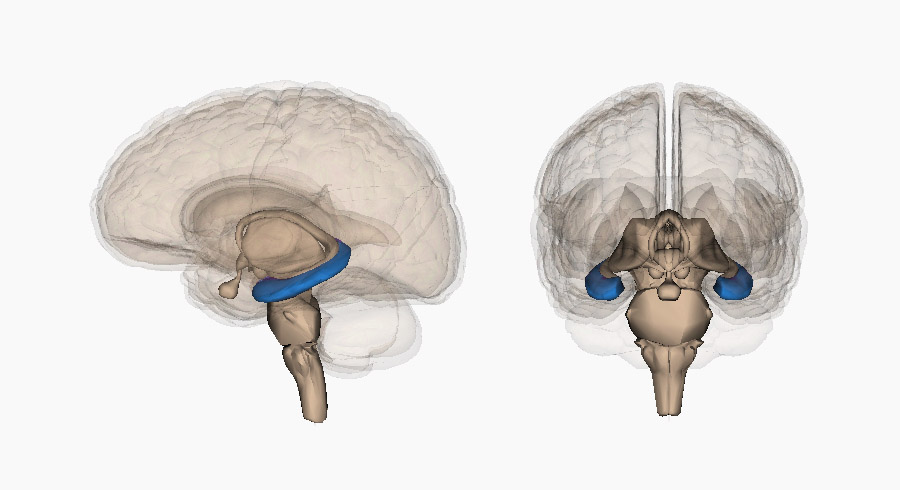Drinking a cup of coffee is a heady experience. The complex mix of strong aromas, intense flavours, acidity, bitterness, and the sensations in the mouth of body, texture, and temperature, can be overwhelming. Trying to describe or evaluate this complexity in a way that can be understood by others presents a challenge.
Our sense of smell in particular is closely linked to memory — specifically the episodic memory, the part of the brain responsible for remembering events and experiences in our lives (AJ Aqrabawi & JC Kim, 2018). The sense of smell evolved much earlier than the other senses, and is associated with the hippocampus, deep within the brain. This may explain why certain smells and flavours can trigger buried memories or emotional responses, that can be hard to describe in words. Describing the smell and flavour of a cup to someone else thus relies on finding some kind of shared experience and a shared language to describe those memories.
 Illustration: hippocampus highlighted in blue.
Illustration: hippocampus highlighted in blue.
In this lesson we’ll look at how common scoring and evaluation systems try to break down these sensations into their component parts, and get an overview of how professionals build their library of sensory memories, to evaluate and communicate the differences between cups more clearly.
Cupping Forms
Methods for evaluating coffees usually involve some sort of cupping or tasting form. The form is a document designed to help record the impression of a particular coffee and direct the taster to focus on the most important attributes. Which attributes are considered important depends on the purpose of the form. For example, a form designed for grading green coffee might be weighted quite differently from one designed to evaluate roast quality.
The method most commonly used within the specialty coffee community is the Green Grading Form from the Specialty Coffee Association (SCA), which is intended to evaluate the quality of the green coffee, rather than roasting or brewing.